[AUTHOR’S NOTE: I had to change the title because I mistakenly thought PUP was founded in early 2008. Having learned that it began operations in November of that year, it has clearly just passed its fourth anniversary. My apologies.]
Perhaps it’s just another byproduct of our stereotypical self-effacement, but few Midwestern cities seem to assume a high national profile, for better or for worse. But it is only for the worse when it comes to the region’s low visibility in regards to innovative problem solving. The sneering contingent from the Northeast might easily claim that the Rust Belt is where creativity died a few decades ago, but it doesn’t take a keen eye to recognize that the Eastern Seaboard hosts just as many going-nowhere-slowly cities as the Heartland. Yet if the Midwest has something worth promoting, it rarely captures the attention it deserves. And it certainly doesn’t benefit from the self-mythologizing that those of us from this part of the country can recognize takes place in abundance just about everywhere else. The Midwest brand is diffuse.
It is for that reason that I now confidently promote an organization that has been making considerable headway in Indianapolis through creative reuse of otherwise disposable (or at least easily disposed) products. Most readers of this blog are probably at least familiar with the name People for Urban Progress, but how many people can point to one of their many achievements, scattered throughout the city limits? For that matter, how many people are engaged in similar initiatives in other cities? Sure, most cities of Indy’s size have an urban advocacy blog like this one, and most have a few non-profits with aims of promoting good urban development, mass transit, bicycle access, and other aims (all of which Urban Indy has promoted at various points as well). But, since its founding in late 2008, People for Urban Progress (PUP) has prevailed by shrewdly avoiding duplicating the efforts of other nonprofits, and the goal of this article is to offer a visual survey of its variegated achievements.
PUP’s kick-off initiative remains one of its proudest achievements. Back during the organization’s infancy in 2008, upon the scheduled demolition of the RCA (Hoosier) Dome to make room for an expansion of the Indiana Convention Center, People for Urban Progress successfully convinced Sabre Demolition, the Indianapolis Parks Department, Keep Indianapolis Beautiful, and Southeast Neighborhood Development (SEND) to divert 13 acres of the RCA Dome roof fabric away from a landfill.  The team at PUP partnered with local designers to transform the Teflon-coated fiberglass roof into wallets, clutches and messenger bags, some of which are still available on their website.
While the accessories created from the dome material have proven quite popular, the initiative shifted the material to this once widely recognizable building into private hands. PUP no doubt wanted some of the canvas to remain visible for posterity, etched into the city’s landscape. The money generated from the dome bag project allowed the organization to embark on a greater challenge with remaining fabric, creating a variety of shade structures at private and public locations scattered throughout the city. The first completed example is visible in the photo below:
Highland Vicinity Park
Â
This pocket garden sits at the corner of 29th Street and Capitol Avenue, just a few blocks away from the Children’s Museum. Previously a filling station, the parcel remained unused as a brownfield for quite some time. In 2010, PUP collaborated with Keep Indianapolis Beautiful through an IPL Project Greenspace grant to remediate the site and transform it into a green asset for the Highland Vicinity neighborhood. The undertaking involved a few other partners: Synthesis Incorporated to develop the landscaping and planting plan; Smock Fansler to provide grading, foundation, and other site work; the Children’s Museum to clean the soil and relieve the parcel of its brownfield status. The pictures, taken from late fall, reveal a level of refinement in the landscaping not widely seen in inner-city neighborhood parks.
Indianapolis Fabrications, a company that has designed some of the best known art installations in Indy from recent years, built and installed the shade structure, but PUP added its personalizing touch.
The organization provided that material that forms the canopy to the shade structure, which, of course, comes from the RCA Dome.
At the time of the photos, the park design team was still installing a drainage swale to separate the property from the residences immediately to the north, but otherwise the garden is completely ready for the neighborhood to enjoy.
As of yet, the Highland Vicinity Garden remains in the possession of the Near North Development Corporation, which maintains it, though it is possible that it will transfer to Indy Parks in the future. Looking around the intersection (and the neighborhood as a whole), it’s easy to see why an intervention was so desirable.
Directly to the west of this park is another large vacant corner lot. I wouldn’t hesitate to guess that it, too, suffers from environmental contamination that stymies any redevelopment, though the low- and moderate-income character of the neighborhood also poses a challenge. Pocket park installations are commonplace throughout inner cities, but rarely do they involve such intensive and creative use of recycled materials. Even the other amenities (benches, slats) at Highland Vicinity use recycled paper and wood provided by Boise Aspen.
South Circle Farm
Â
PUP took a much bigger role in the design and development of the urban agriculture installation at South Circle Farm.
Like the park at Highland Vicinity, this parcel at 2048 South Meridian Street is a former brownfield, owned until recently by the now-defunct Concord CDC. Amy Matthews, the brains behind South Circle Farm http://www.southcirclefarm.com/ , earned a grant from the Lilly Foundation which allowed for restoration of the top soil and installation of new mulch over the course of early 2011. As the designer and project manager, People for Urban Progress helped organize the spatial arrangement and develop programming: community dinners, agricultural workshops, and, of course, the mammoth shade structure.
This particular canopy consists of eight panels totaling 20 feet by 35 feet.
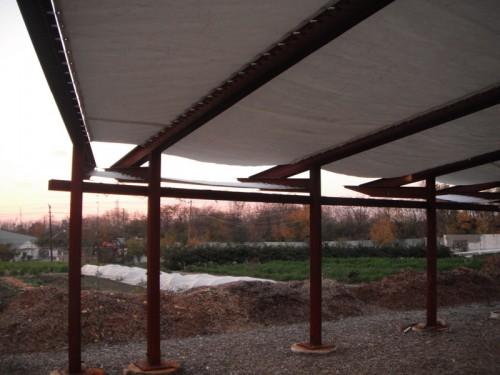
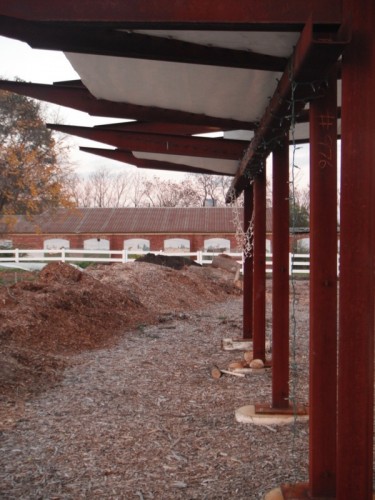
The shade structure, which PUP completed in the summer of 2012, is only the most prominent visual element at South Circle Farm. But the property itself hosts a variety of organically grown crops subject to varying climatic conditions.
Also included in the master plan (which PUP helped to devise and implement) are gutters for a cistern that allow the harvesting of rainwater—a particularly critical feature during last summer’s parched environment. Many local farmers’ markets and the Pogue’s Run Grocer sell this produce.
Butler Farms
Â
A third project, Butler Farms, will employ a similarly engineered shade structure in the Rocky Ripple neighborhood when completed. Like South Circle Farms, much of the goal of this agricultural installation is community outreach. Architect Paul Puzzello serves as the project manager, partnering with biology professor Tim Carter, who is working under Butler University’s Center for Urban Ecology, which supports the grant-funded initiative. When complete, the shade structure will employ the biggest of the RCA dome roof canopies so far. It will also include a pavilion and a geodesic dome, totaling approximately half the size of a football feel, all constructed out of recycled components. Stay tuned for further updates when Butler Farms is complete.
Naturally these three projects comprise only a fraction of the remaining RCA Dome material, and many other shade structures remain on the docket. At some point in the future, PUP intends to partner with Indy Parks to use material for a variety of shade structures and umbrellas installed at locations throughout the park system. At that point, People for Urban Progress will have successfully integrated the salvaging of the RCA Dome roof into unambiguously public space owned by the City.
Bush Stadium Seating
The organization can claim one other high-profile rescue: the seating from the old Bush Stadium, which inevitably otherwise would have headed right to a landfill. The home of the Indianapolis Indians from 1931 until 1996, Bush Stadium promptly closed upon the opening of Victory Field. IMS President Tony George’s attempt to convert the diamond into a dirt track for midget auto racing quickly went bust; since 1998 the property has sat vacant and fallen into disrepair. Only in the last few years did a developer intervene to save it from implosion; Core Redevelopment, LLC is now converting the structure into a multi-unit apartment building called Stadium Lofts.
Despite the tremendous amount of restorative work necessary to render Bush Stadium habitable, the old ballpark seating remained in good condition over the years. PUP diverted the chairs from disposal so that they could have a new life—as Indygo bus stops:
Obviously the seating at the stadium could endure the widely variable Midwest climate, so there was no reason that clusters of chairs couldn’t find new life at various locations throughout the city. The one above is simply the highest profile intersection: at Vermont Street, Alabama Street, and Massachusetts Avenue. Other locations (both existing and proposed) include Meridian Street and Fall Creek Parkway (near Ivy Tech), 86nd Street and Evergreen Avenue in Nora, Carrollton and Broadripple Avenue, Hoefgen Street near Garfield Park, 46th Street and Arlington Avenue near Arlington High School, and along Indiana Avenue near the Walker Theatre. Eventually, the hope is to provide shelters for many of these stops (perhaps again using the RCA Dome material) and to allow local agencies to adopt various stops.
Even if those iconic yellow seats eventually become ubiquitous within Marion County, many more will inevitably remain unused. Some private and nonprofit companies have claimed a few for their own purposes, such as the Service Center for Culture and Community http://bigcar.org/ , until a recently a neglected old outparcel around the Lafayette Square Mall, where the founders of the Big Car Gallery moved a few years ago. Their indoor mini-theater uses another cluster of four Bush Stadium chairs salvaged by People for Urban Progress:
It’s a matter of time before the old chairs find their way to other unexpected locations.
If this article seems like a promotional campaign for this winning little organization, I’m not going to try to deny it. I’ll concede I was at first skeptical when I heard about PUP a few years ago, during an extended time living in the city. As I mentioned earlier, my fear was that its goals and objectives wouldn’t distinguish itself from dozens of other urban advocacy nonprofits across the country, and it would soon lose itself among the din of similar voices. But PUP carved a niche that is not just distinctive not just within Indianapolis, but, I strongly suspect, at a national or even global level. Rather than inveigh against city leaders for not building a Portlandesque light rail system or for not imposing zero carbon emission goals, the innovators at PUP have avoided partisan obstructionism altogether.
Siblings Michael and Sarah Bricker (the former is a co-founder) and their team have used fashion as a platform for community good. It was never their intention for handbags, wallets, or the new shower curtains (recycled from Super Bowl XLVI signage) to be PUP’s primary promotional coup, but their success has rallied a loyal fan base (as well as some national media coverage) without ever reducing the organization into a political tool. In the future, the team at PUP would absolutely like to engage in initiatives that improve Indy’s accessibility by methods other than private automobiles, or to encourage superlative urban design on new downtown developments. But an organization heading towards its fifth birthday has absolutely nothing to be ashamed of if it has rescued 250 tons of fabric and 9,000 seats from languishing in a landfill. I hope to provide visual updates in the future, as the PUP’s legacy of eco-friendly interventions continues.
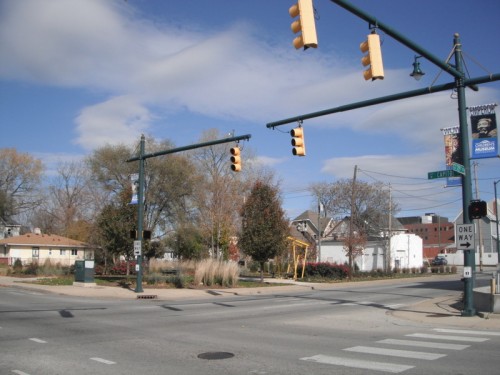
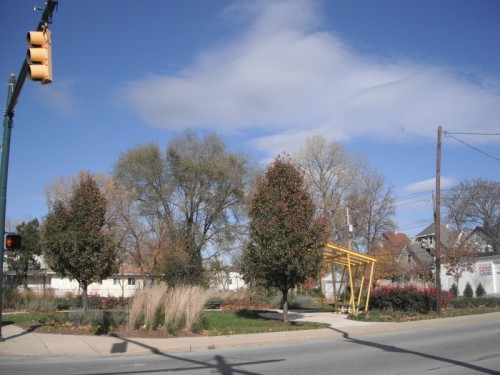
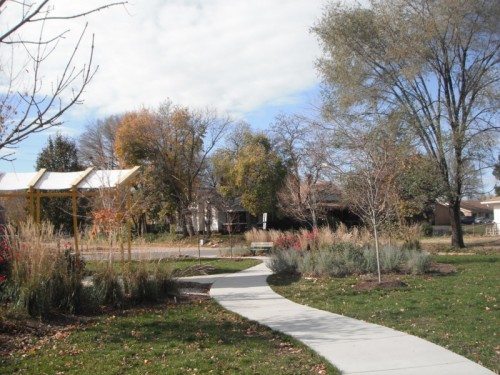
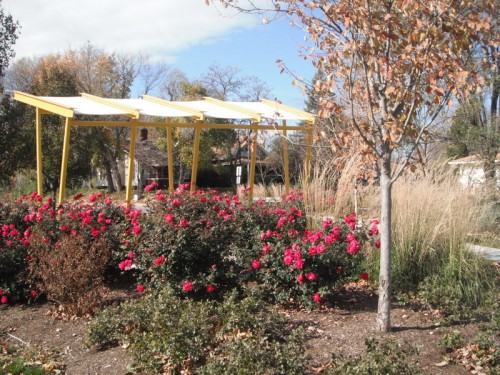
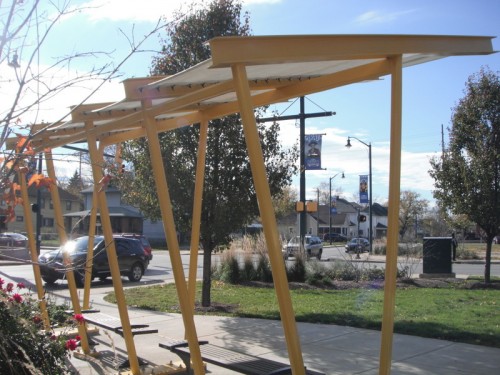
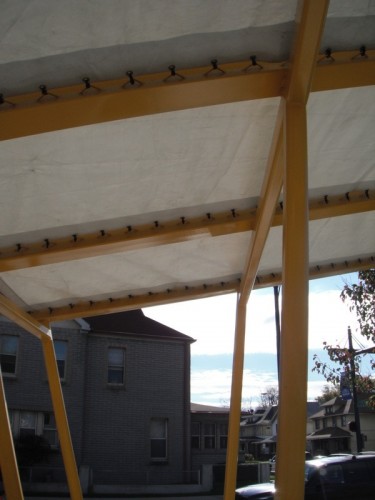
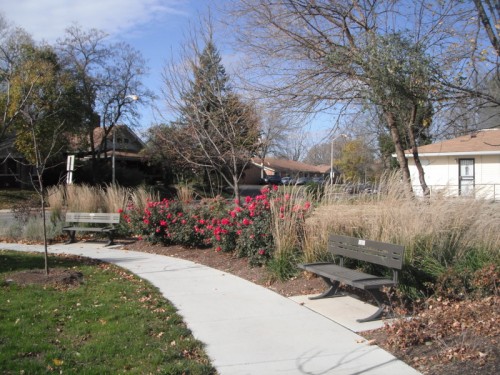
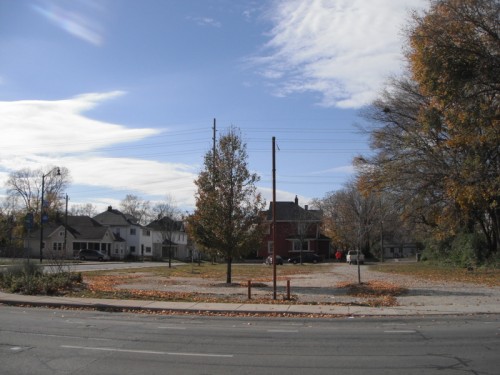



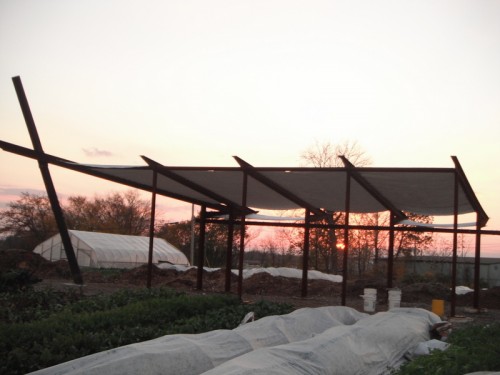

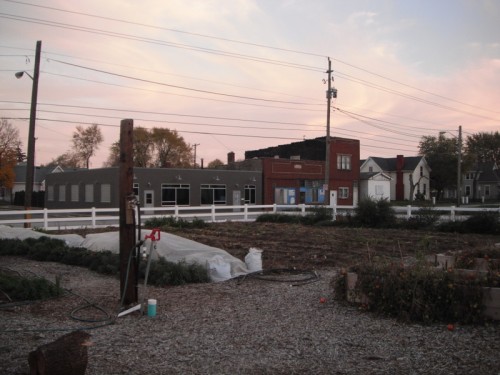
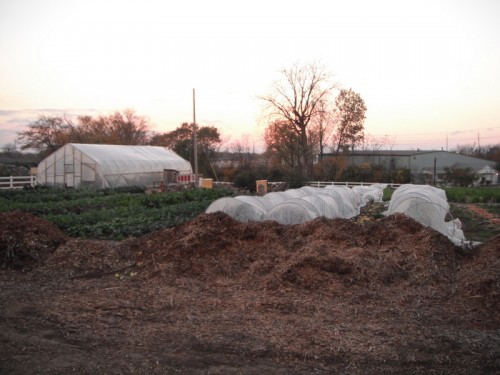
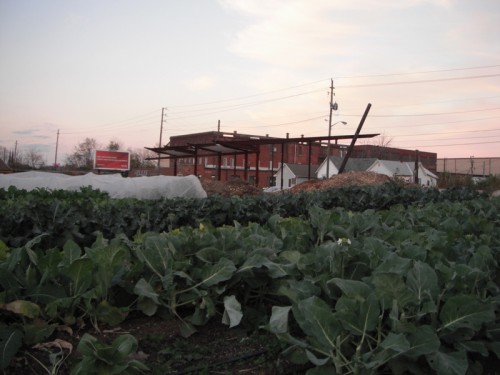

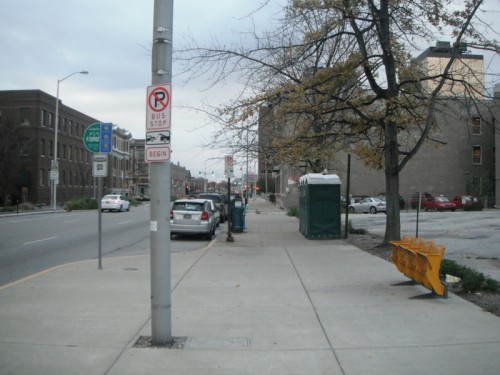
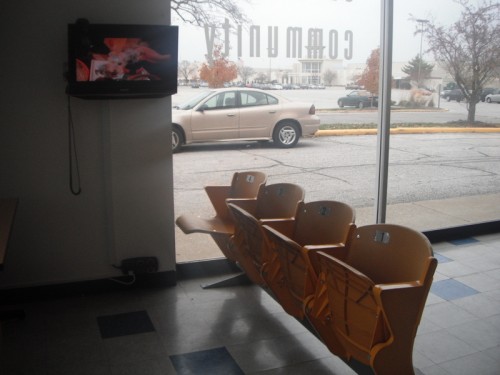
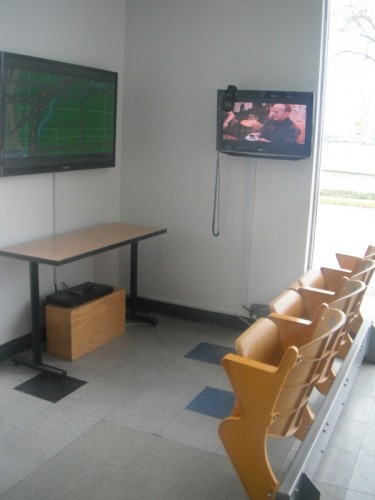
Hear hear! PUP is doing great work for our city. Keep spreading the word!
Love to see an organization bettering the urban environment and strengthening neighborhoods.
Due to their age and condition both the dome roof material and the seating were to be taken to a dump, it was reported at the time. As such, their value was zero – and, perhaps, less if dump fees were to be charged. PUP refurbished the seats for their current use while the material was recycled for the various objects described.
I’d be interested in hearing what was illegal about this.
Frankly, I do not care. That these items were saved from a landfill is fine by me. Its better for the public good. If your heartburn is over the fact that someone could have made some money off of them, I can understand why you might be upset.
To me though, this is the best upcycle of the items.
Considering that PUP partnered with a public agency to procure the paraphernalia (dome roof, stadium seats), I too would be interested in hearing how this arrangement was illegal. Thanks everyone for your responses.
You are all a bunch of United Nations UN Agenda 21 Authoritarian Control Freaks. You want a life without private automobiles? Move to India. Leave Western Civilization alone.
Please get a life and leave the rest of us alone.
Wow, the lefty indoctrination and Global Warming Hoax has really worked on you people.
Wake up!
Wake up!
Wake up!
Wake up!